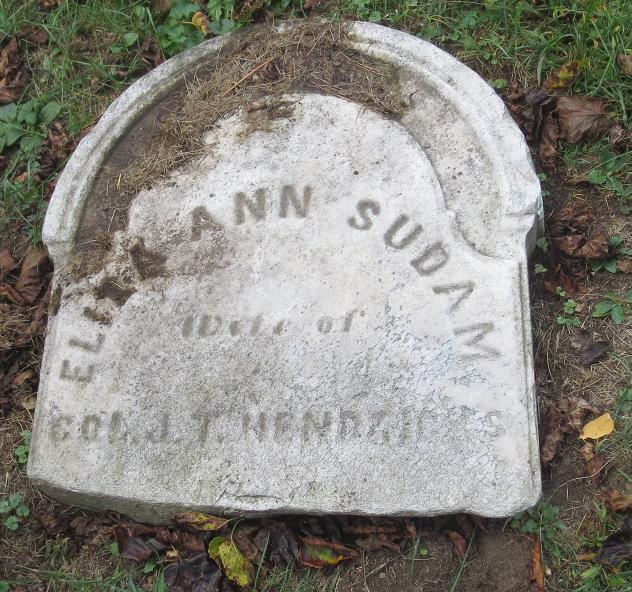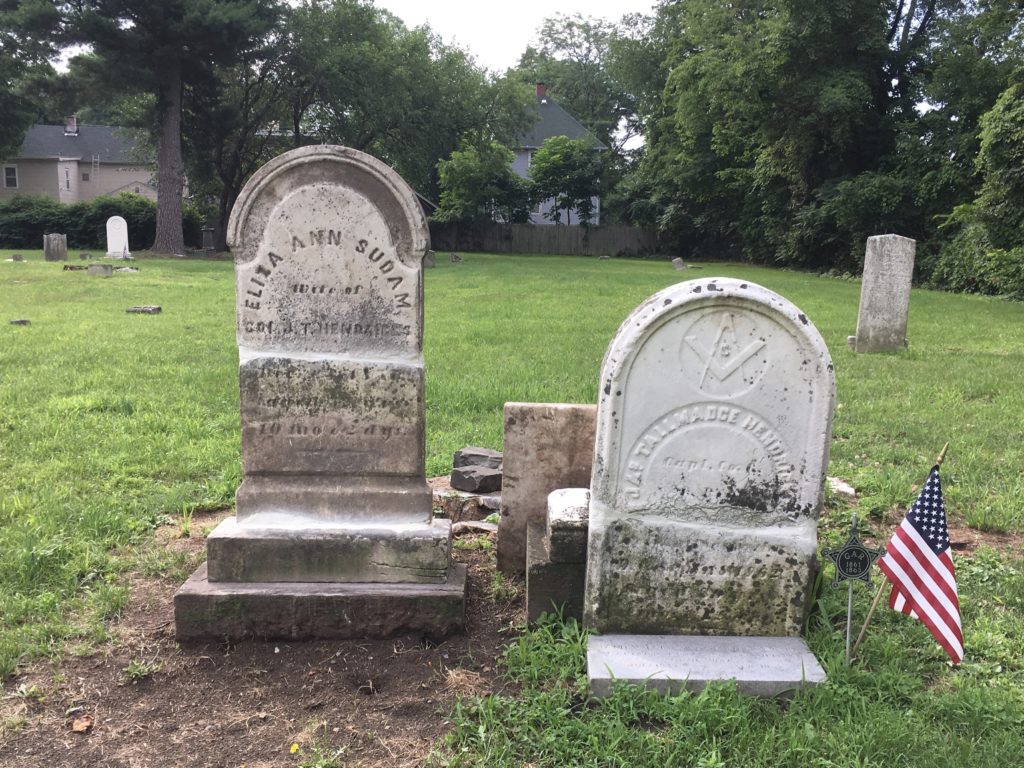
The Friends of Historic Kingston have recently restored a headstone at Sharp Cemetery in Kingston, NY. The headstone, belonging to Eliza Ann Sudam (1805-1857), suffered damage from a fallen tree. The Friends of Historic Kingston have been restoring several of the headstones and cleaning up this cemetery for many years with assistance from the City of Kingston and the Ulster Garden Club.
Eliza has a special connection to the Friends of Historic Kingston. Her father, John Sudam, built the house that is currently owned by FHK, now known as the Fred J. Johnston House. Eliza grew up in this house, built in 1812, located on the corner of Wall and Main Streets.
While admiring the beautifully restored headstone, I became curious about Eliza’s life and the lives of her family members whose nearby graves surrounded hers.
Eliza was born in 1805 to John Sudam and his wife Ann Tallmadge. John Sudam was a lawyer by trade and later served in the New York State Senate from 1823 to 1824, and again from 1833 until his death in 1835. He built his home right across Wall Street from their church, the Dutch Reformed Church, now known as the Old Dutch Church. John Sudam’s parents were Oke Sudam – a veteran of the Revolutionary War – and his wife Elisabeth Sleght. John could see his father’s headstone in the Old Dutch Church Graveyard from the house he called home. Eliza married Col. Jacob Tjerk Hendricks in 1827. Hendricks was also from an old Kingston family. The couple moved to Rondout where Jacob worked as an agent for the D & H Canal. Jacob and Eliza had four children. Three of them died at the very young ages of 1, 2, and 5 years of age. Their son, Capt. James Tallmadge Hendricks, lived to the age of 30, but died in 1862 from injuries sustained at the second Battle of Bull Run while serving with the 20th NYS Militia Regiment during the Civil War. He is buried beside his mother.
Headstones are vital relics that honor our ancestors’ memories, but they also represent so much more. Eliza’s family placed her monument in Sharp’s Cemetery so that they had a place to remember her, leave a flower, or say a prayer. But her stone represents more than that. In some ways, a headstone can give someone a little bit of immortality. Now, 160 years after Eliza’s death, the Friends of Historic Kingston cared enough to restore her broken headstone. She lives on when someone reads the carving on her stone and takes a moment to think about her and the life she led. This is why it is so crucial that we protect and preserve our ancestors’ gravesites – to remember those we have lost – but also to preserve their legacies for the historians of tomorrow.
-Nancy Chando

